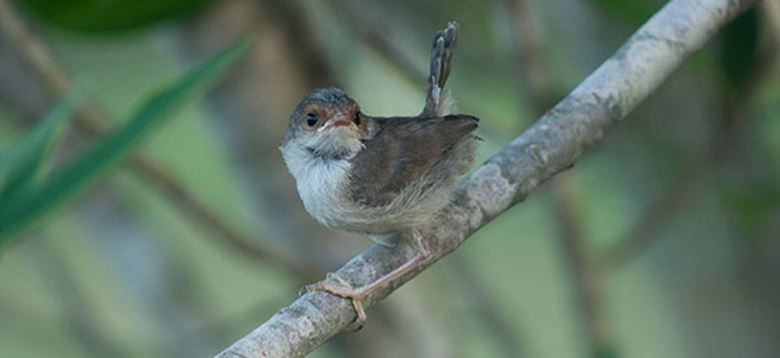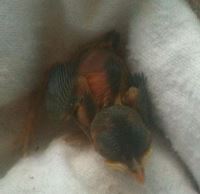
Mystery chick
Monday, May 22, 2023

One of our WIRES mid south coast volunteers made their way to Moruya to rescue three little unknown baby birds. Initially reported to be swallows. The chicks were very young, unfeathered and with their eyes barely opening.
Unfortunately on arrival, two had already passed away, leaving just one very cold and weak little chick. It was immediately obvious that the bird was not a swallow, as it had been found in a destroyed grass nest and swallows are well known to build hard, mud nests. After being introduced to a heat mat and having her temperature monitored, not to mention constant feeding at 15 minute intervals (or less), the little bird began to thrive. For some time we had our suspicions, but what species she truly was seemed to be an exciting mystery until that very special little tail began to appear, and her earthy colours started to show through.
No later than 10 days and our little mystery bird was fully feathered and displaying all of the flitty, cheeky behaviors we suspected from nothing other than a Superb Fairy Wren.
Superb Fairy Wrens are beautiful little birds, widely recognized by the incredible blue colouring of adult males during breeding season. They are sensitive and high-energy, and often seen dashing through the undergrowth or catching insects off the lawn in small groups. You would not have known how incredibly, socially orientated these birds were until raising one from such a young chick.
Soon, she had began to clean the room of flies, spiders and any other insects. We experienced her unique little behaviours as they developed, which included waving her tail over the top of her head whilst she crept up on unsuspecting insects.
She spent larger amounts of time outside as she grew, and her carer Lilly, says she spent a lot of time catching grasshoppers and beetles in the grass with her as she became more independent and capable. When alone, she was enclosed where we knew the local wrens ‘hung-out’, and eventually we would open her door when they were nearby in an effort to introduce them to one another.
The wrens were very tolerant of her presence, and were quick to accept her into their small family group as a juvenile. For some time she visited us several times a day – sneaking her way in through a tiny hole in the fly screen. Very clever and as equally mischievous, she knew exactly where the mealworms were and would help herself to them quite frequently, before leaving and being on her way again.
Now she is a beautiful adult, she visits us occasionally for a mealworm, and never comes alone – always in the company of several other wrens. Lilly says she provided one of her most rewarding experiences as a WIRES Member.
Recent Posts
WIRES launches its first wildlife rehabilitation centre - Mullyang
WIRES Emergency Response in the wake of ex-tropical cyclone Alfred
International Women’s Day Volunteer Spotlight: Shelley
Tropical Cyclone Alfred – Emergency Wildlife Advice
Interview with WIRES Training and Development
Celebrating Women in Science: The Journey of Holly, Wildlife Conservationist and WIRES Team Member
